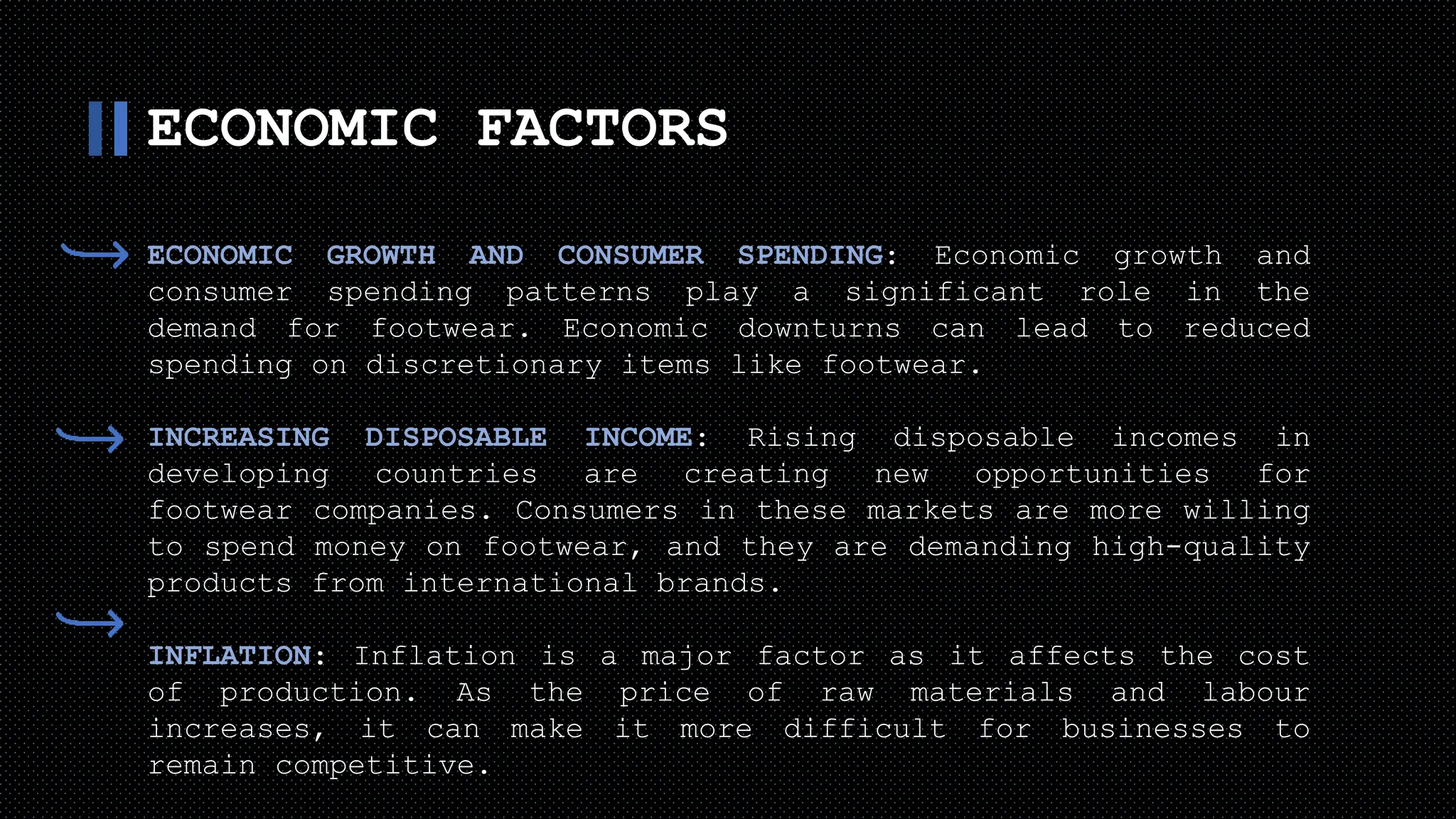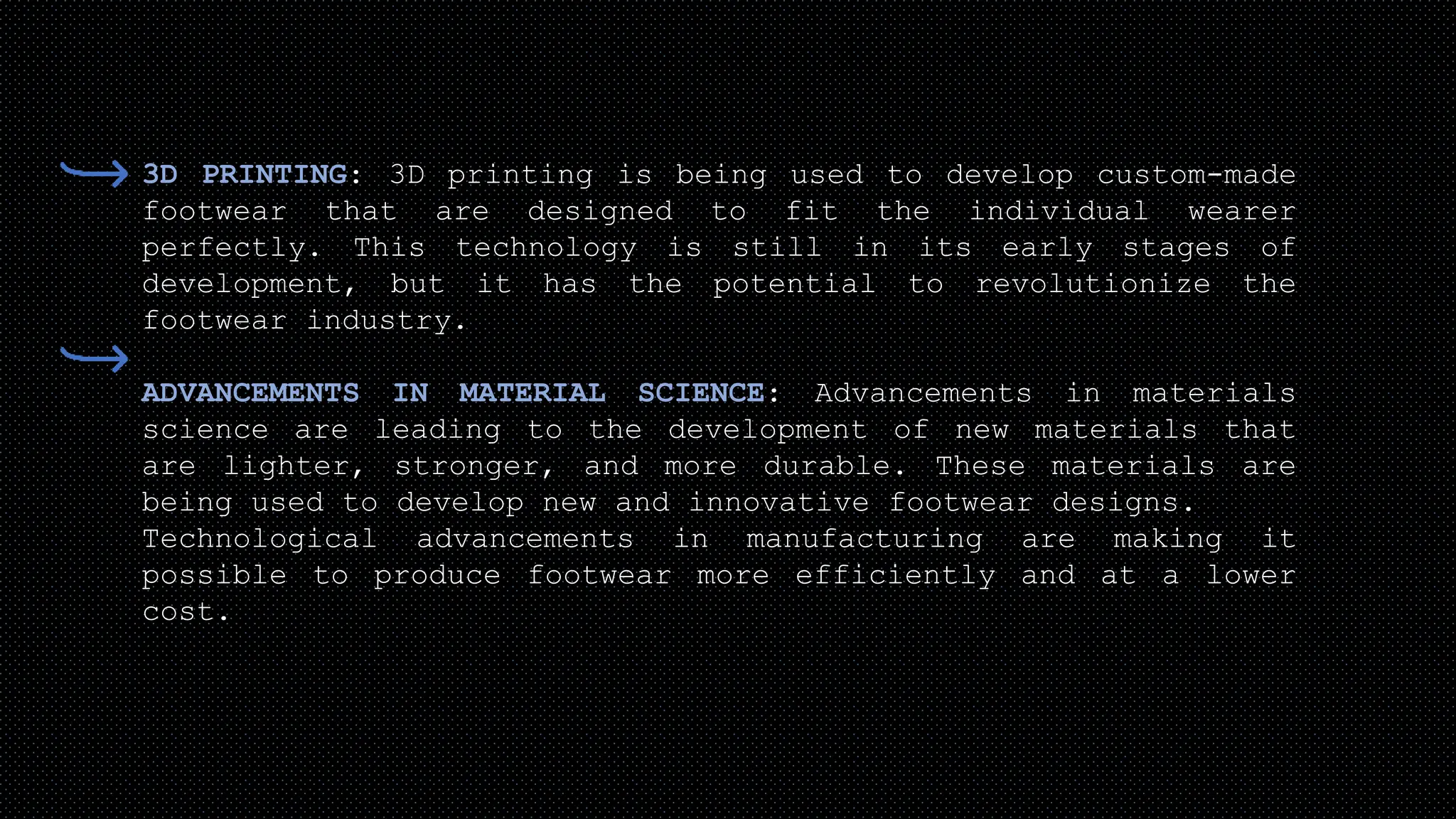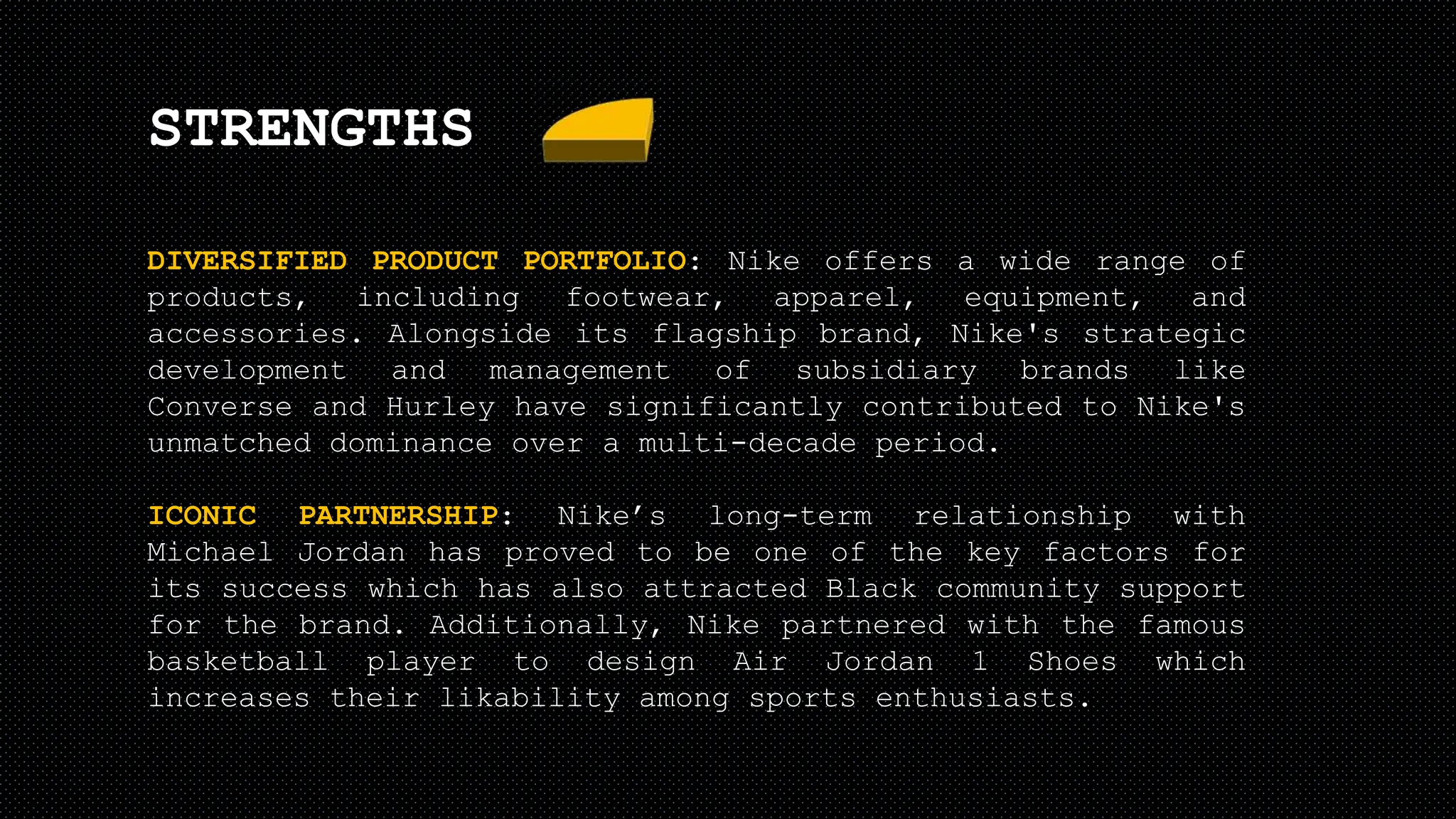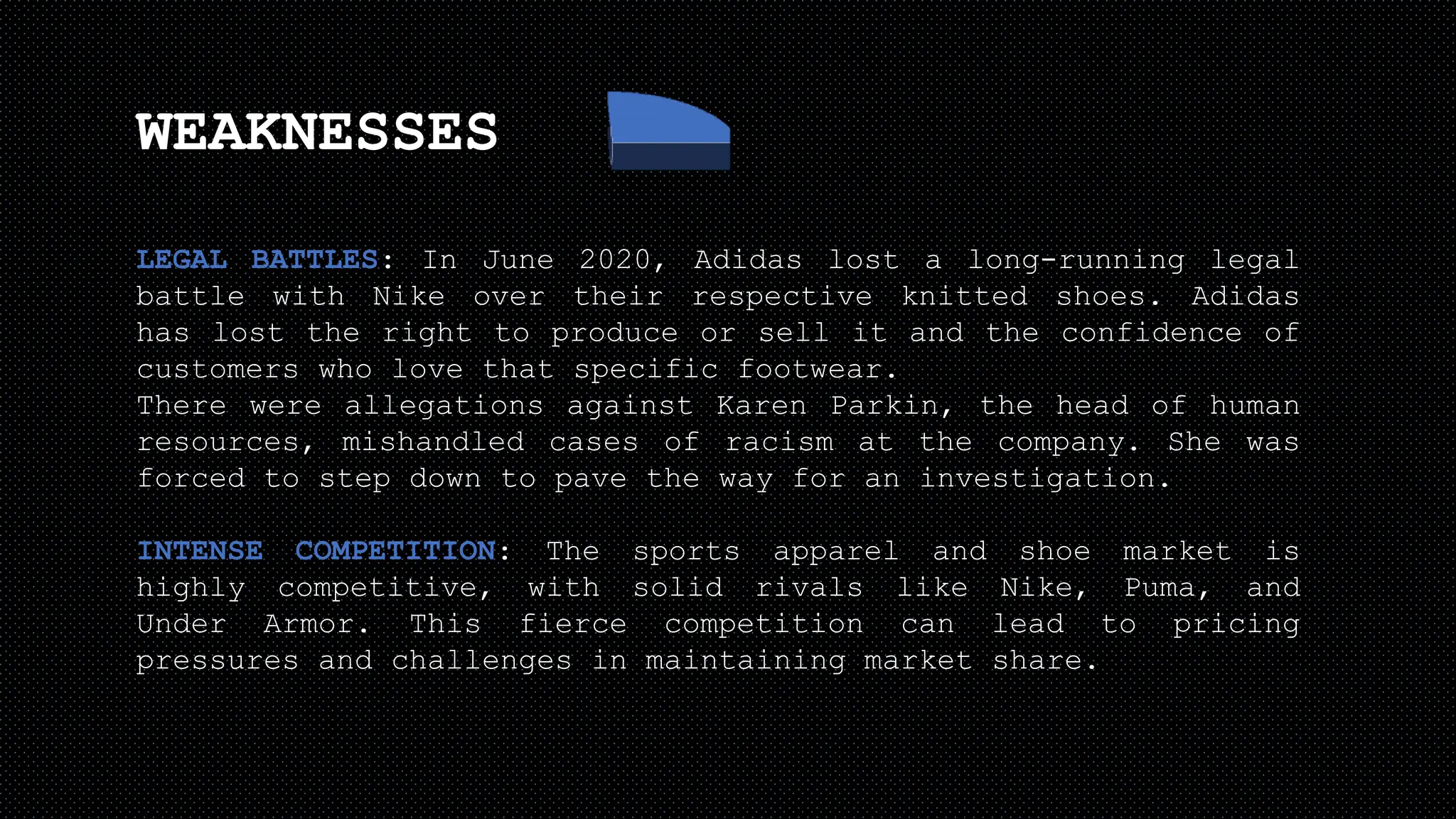The document provides an overview and analysis of the global footwear industry. It discusses industry trends like athleisure and sustainability. It analyzes the industry's macro environment, including demographic, economic, technological, and environmental factors. It also performs SWOT analyses of major competitors Nike and Adidas, identifying their strengths like brand recognition, weaknesses like labor issues, opportunities in emerging markets, and threats from increased competition and trade tensions.












































